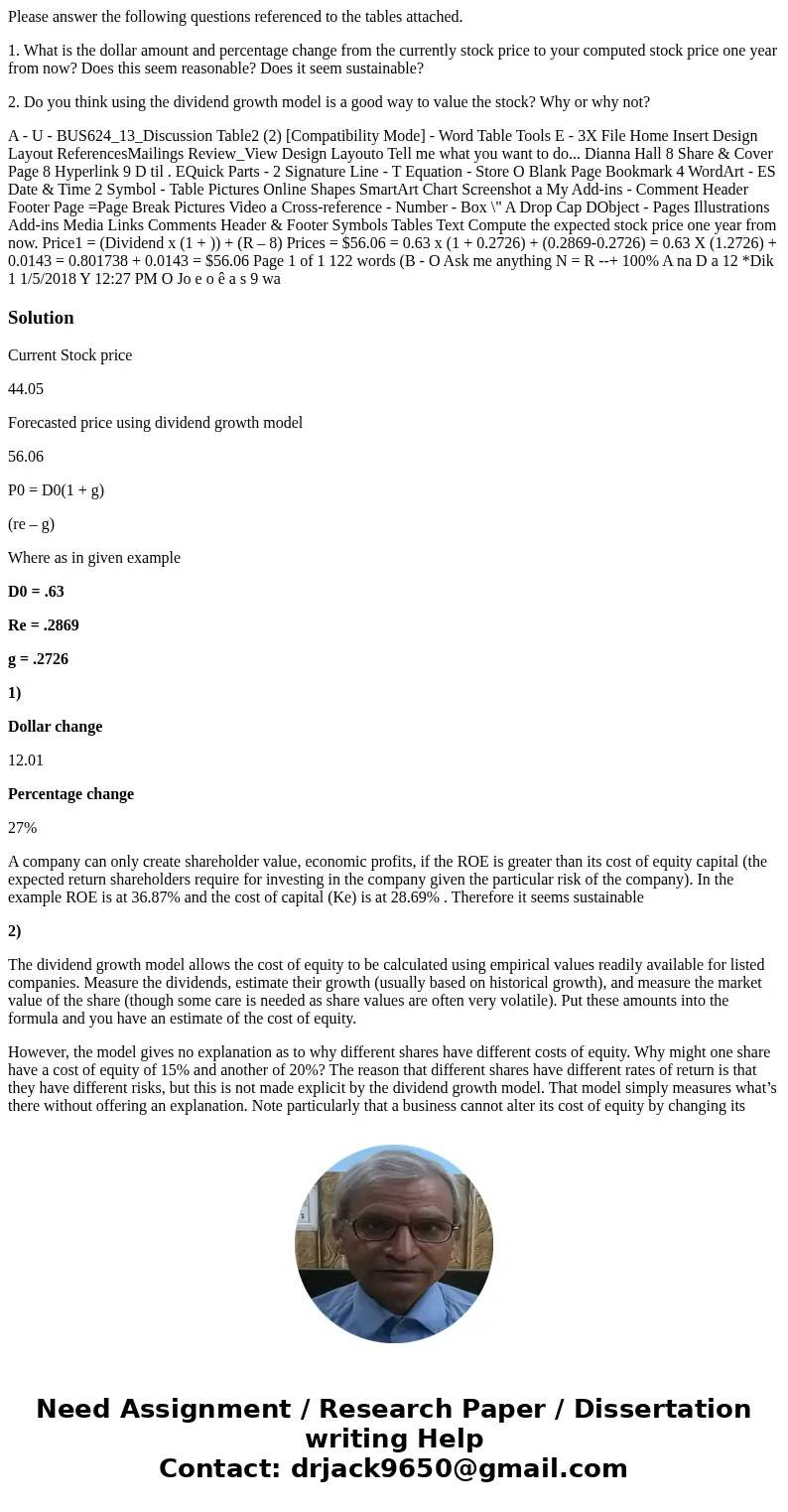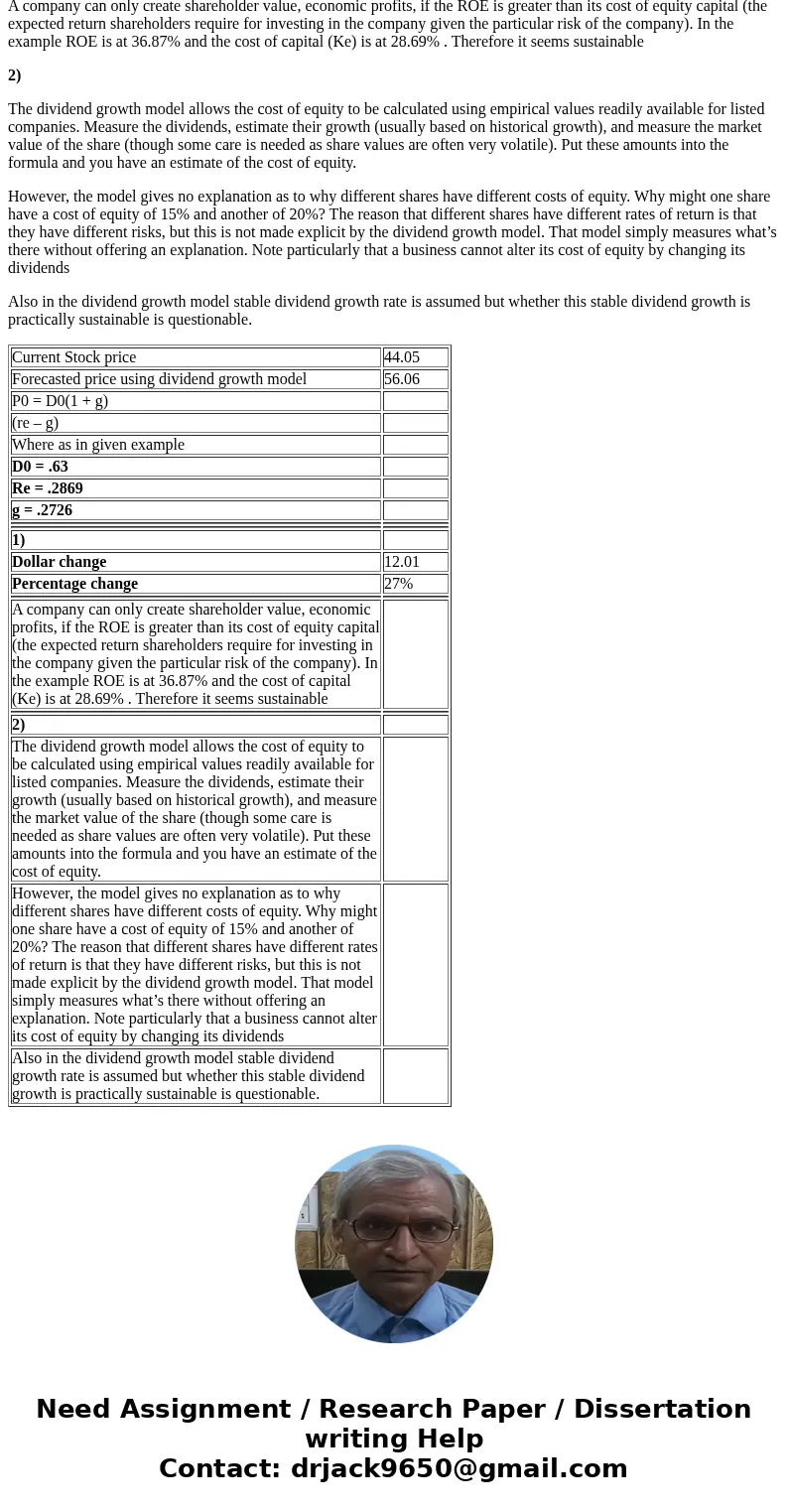Please answer the following questions referenced to the tabl
Please answer the following questions referenced to the tables attached.
1. What is the dollar amount and percentage change from the currently stock price to your computed stock price one year from now? Does this seem reasonable? Does it seem sustainable?
2. Do you think using the dividend growth model is a good way to value the stock? Why or why not?
A - U - BUS624_13_Discussion Table2 (2) [Compatibility Mode] - Word Table Tools E - 3X File Home Insert Design Layout ReferencesMailings Review_View Design Layouto Tell me what you want to do... Dianna Hall 8 Share & Cover Page 8 Hyperlink 9 D til . EQuick Parts - 2 Signature Line - T Equation - Store O Blank Page Bookmark 4 WordArt - ES Date & Time 2 Symbol - Table Pictures Online Shapes SmartArt Chart Screenshot a My Add-ins - Comment Header Footer Page =Page Break Pictures Video a Cross-reference - Number - Box \" A Drop Cap DObject - Pages Illustrations Add-ins Media Links Comments Header & Footer Symbols Tables Text Compute the expected stock price one year from now. Price1 = (Dividend x (1 + )) + (R – 8) Prices = $56.06 = 0.63 x (1 + 0.2726) + (0.2869-0.2726) = 0.63 X (1.2726) + 0.0143 = 0.801738 + 0.0143 = $56.06 Page 1 of 1 122 words (B - O Ask me anything N = R --+ 100% A na D a 12 *Dik 1 1/5/2018 Y 12:27 PM O Jo e o ê a s 9 waSolution
Current Stock price
44.05
Forecasted price using dividend growth model
56.06
P0 = D0(1 + g)
(re – g)
Where as in given example
D0 = .63
Re = .2869
g = .2726
1)
Dollar change
12.01
Percentage change
27%
A company can only create shareholder value, economic profits, if the ROE is greater than its cost of equity capital (the expected return shareholders require for investing in the company given the particular risk of the company). In the example ROE is at 36.87% and the cost of capital (Ke) is at 28.69% . Therefore it seems sustainable
2)
The dividend growth model allows the cost of equity to be calculated using empirical values readily available for listed companies. Measure the dividends, estimate their growth (usually based on historical growth), and measure the market value of the share (though some care is needed as share values are often very volatile). Put these amounts into the formula and you have an estimate of the cost of equity.
However, the model gives no explanation as to why different shares have different costs of equity. Why might one share have a cost of equity of 15% and another of 20%? The reason that different shares have different rates of return is that they have different risks, but this is not made explicit by the dividend growth model. That model simply measures what’s there without offering an explanation. Note particularly that a business cannot alter its cost of equity by changing its dividends
Also in the dividend growth model stable dividend growth rate is assumed but whether this stable dividend growth is practically sustainable is questionable.
| Current Stock price | 44.05 |
| Forecasted price using dividend growth model | 56.06 |
| P0 = D0(1 + g) | |
| (re – g) | |
| Where as in given example | |
| D0 = .63 | |
| Re = .2869 | |
| g = .2726 | |
| 1) | |
| Dollar change | 12.01 |
| Percentage change | 27% |
| A company can only create shareholder value, economic profits, if the ROE is greater than its cost of equity capital (the expected return shareholders require for investing in the company given the particular risk of the company). In the example ROE is at 36.87% and the cost of capital (Ke) is at 28.69% . Therefore it seems sustainable | |
| 2) | |
| The dividend growth model allows the cost of equity to be calculated using empirical values readily available for listed companies. Measure the dividends, estimate their growth (usually based on historical growth), and measure the market value of the share (though some care is needed as share values are often very volatile). Put these amounts into the formula and you have an estimate of the cost of equity. | |
| However, the model gives no explanation as to why different shares have different costs of equity. Why might one share have a cost of equity of 15% and another of 20%? The reason that different shares have different rates of return is that they have different risks, but this is not made explicit by the dividend growth model. That model simply measures what’s there without offering an explanation. Note particularly that a business cannot alter its cost of equity by changing its dividends | |
| Also in the dividend growth model stable dividend growth rate is assumed but whether this stable dividend growth is practically sustainable is questionable. |


 Homework Sourse
Homework Sourse